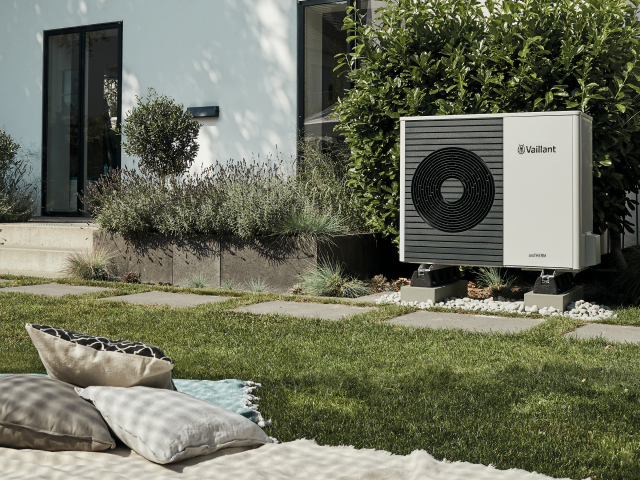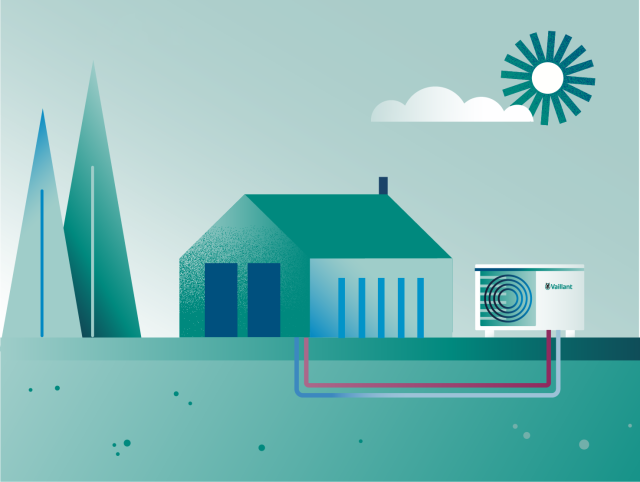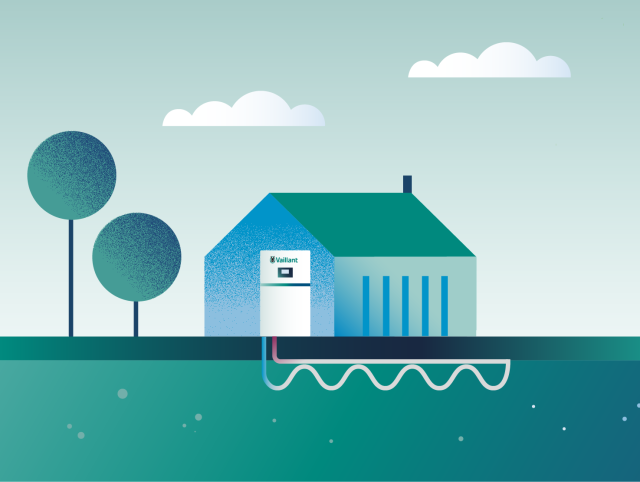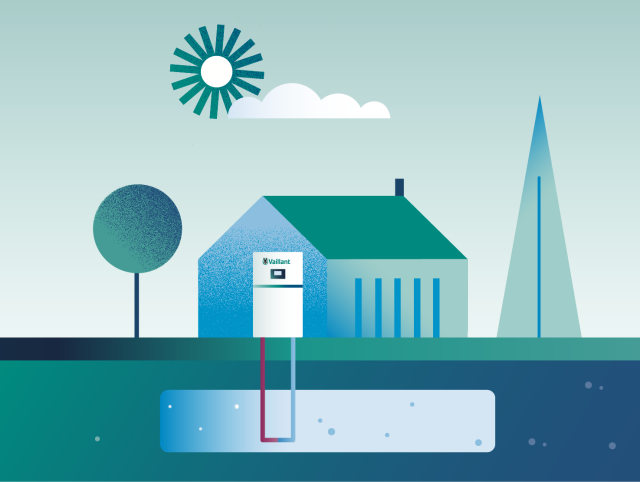Gas-condensing boiler technology
Modern gas-condensing boiler technology makes efficient and cost-aware heating possible...
Read more
Heat pump systems make system owners less dependent on fossil energy sources and make energy-efficient heating based on renewable resources possible. They only require a small amount of electrical energy to drive them. Ideal to supply a home with heat and hot water in an environmentally friendly way.
What makes Vaillant Group heat pumps special? Our latest-generation heat pumps use a natural coolant. Thanks to its low global warming potential, this coolant is exceptionally environmentally friendly and enables high flow temperatures. As a result, these heat pumps can provide convenient heating and hot water not only in new buildings, but also in older existing buildings. The Vaillant Group’s pioneering role in the development of future-oriented heat pumps can also be seen on other levels: aroTHERM plus, for example, is one of the quietest heat pumps on the market. And the recoCOMPACT exclusive is 95 per cent recyclable.

CO2 savings through the use of renewable energies
Heat pumps generate their energy for heating and water heating from environmental heat and are therefore particularly climate-friendly. They use energy from natural sources and convert it very efficiently into heating energy. Heat pumps can obtain up to 75 per cent of the required energy from renewable sources – and thus without fossil fuels. The remaining drive energy is covered by electricity. If heat pumps are operated exclusively with electricity from renewable sources, they can even be completely emission-free.
Future-proof investment with a high level of self-sufficiency
Unlike fossil fuels, environmental energy is inexhaustible, always available and, what’s more, free of charge. System owners who use their own photovoltaic system to generate electricity for their heat pump become significantly less dependent on the energy grid. If battery storage is integrated into the system, it can store self-generated electricity and make it available when the sun is not shining. Heat pump systems are also extremely energy-efficient, are a future-proof investment and increase the value of real estate. In many European countries, the installation of a heat pump is comprehensively subsidised – for both old and new buildings – making them a particularly attractive choice.
The physics behind heat pump technology are the same as those of a pressure cooker: boiling water evaporates, pressure builds inside the vessel and the temperature of the water vapour rises. A heat pump uses exactly the same process, except that a liquid coolant evaporates instead of water. The coolant passes through a closed cycle: firstly, it extracts the thermal energy from the captured environmental heat and evaporates. A compressor then compresses the resulting gas at high pressure, causing the temperature of the coolant vapour to rise. In the heat exchanger, the gaseous coolant transfers the heat to the heating cycle of the residential property. During this process, the gas returns to a liquid state – and the cycle can start afresh.
The system works in reverse when cooling. During “active cooling”, the water circulating in the heating cycle is cooled. As a result, the water absorbs the heat in the building and directs it outside via the cycle. In this way, the temperature inside can be lowered by up to 3 degrees Celsius, for example using underfloor heating.
Brine-water heat pumps also facilitate “passive cooling”. Here, the temperature of the earth and groundwater is transferred directly to the water used in the heating system, and electricity is only needed for the pumps.

Ambient heat

Air-water heat pumps harness the heat of the ambient air, which is collected by an outdoor unit and transferred to an indoor unit. Alternatively, an air-water heat pump can also be installed as a complete compact unit inside the house. The system works at outdoor temperatures as low as minus 22 degrees Celsius.
Can be installed quickly
Small amount of space required outside the house
Supports active cooling
Geothermal heat

Geothermal heat pumps harness the heat stored in the ground using one of two different systems: either via a horizontal geothermal collector set up beneath the surface or via a vertical downhole heat exchanger, which is usually dug up to 100 metres into the earth. Frost-proof brine is used as the heat carrier in both cases.
Heat source with a constant temperature all year round
Little land required with a downhole system
No visible outdoor equipment
Supports passive cooling
Groundwater heat

Water-water heat pumps harness the heat contained in groundwater by means of two wells: a suction well transports the water from depths of up to 15 metres to the heat exchanger above, whereas the injection well subsequently returns it to the natural cycle.
Groundwater has a constantly high temperature (approx. 10 degrees Celsius) all year round
Only minor seasonal temperature fluctuations
Exceptionally energy-efficient heat generation
Supports passive cooling